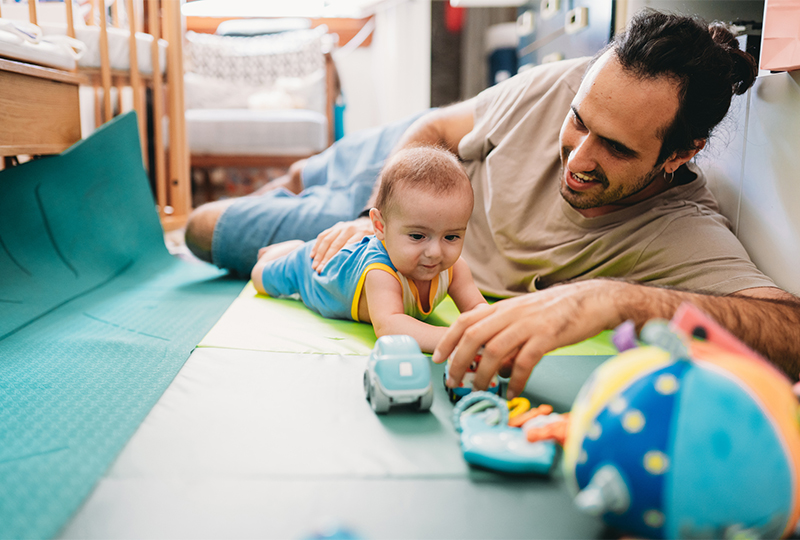The practice of putting awake infants on their bellies has come under scrutiny on social media. Here’s what to know about the dos and don’ts of tummy time.
To tummy time or not to tummy time? That is the question on many new parents’ minds these days. We talked to Dr. DeOnna Johnson, a pediatrician at Vanderbilt Children’s Primary Care, to learn all about it.
What is tummy time?
For those who aren’t familiar, tummy time is exactly what it sounds like: When awake babies spend time lying on their tummies rather than their backs. It has plenty of benefits, namely physical development.
“Putting infants on their tummies while they’re awake is a great way for them to develop neck, shoulder and arm strength.”
“Tummy time is important for helping babies build muscle strength,” Johnson said. “The idea is that putting infants on their tummies while they’re awake is a great way for them to develop neck, shoulder and arm strength.”
It also helps prevent positional plagiocephaly, which is when an infant develops a flat spot on the back of their head from lying in the same position for extended periods.
But the importance of tummy time has come into question in recent years, particularly on social media. Some say that babies shouldn’t be placed on their tummies before they can roll into and out of the position on their own, which isn’t the case for most babies until around age 6 or 7 months.
Johnson (as well as the American Academy of Pediatrics and the National Institutes of Health) disagree.
“If you leave a baby on their back until they’re ready to roll, it will take them longer to develop that muscle strength and develop the skill,” Johnson said. “Tummy time is really just practice and exercise, and I can only see it as beneficial.”
When to start tummy time
Now that you know it’s recommended by the experts, you’re probably wondering how soon you can begin tummy time with your baby. The answer is as early as the newborn stage.
“One of the best ways to begin is to place your baby directly on your chest when both of you are awake,” Johnson said. “Your baby will automatically seek out your face and react to your voice, which are great motivators for them to lift their heads. Then, as they get better at that, you can transition to a mat or blanket.”
Once you and your baby are comfortable, you can take tummy time to the floor. Of course, you’ll need to exercise caution when your little one is getting their exercise. Be sure to follow these guidelines to keep baby safe:
- Remember to only do tummy time when both you and baby are awake.
- Never place baby to sleep on their tummy.
- Practice tummy time on the floor so there’s no fall risk.
- Don’t leave baby alone during tummy time, even for a minute.
- Get down on the floor with your baby. This gives your baby a big incentive to lift his or her head (to see you!) and encourages bonding.
- Start slowly. Most babies need time to get used to lying on their bellies. Start with just three to five minutes, two to three times a day and work up to 15 to 30 minutes of total tummy time per day.
- Don’t forget the toys! Placing toys next to or in front of your baby can keep tummy time entertaining.
- Place a rolled blanket or tummy time pillow under your baby’s chest to assist. This can make tummy time more comfortable, particularly when starting out.

Care Closer to Home
The Pediatric Primary Care program at Monroe Carell Children’s Hospital at Vanderbilt ensures quality care for children throughout Middle Tennessee as close to their homes as possible. This is a shared mission with community pediatricians, hospital partners and the Vanderbilt Health family of pediatric clinics.

